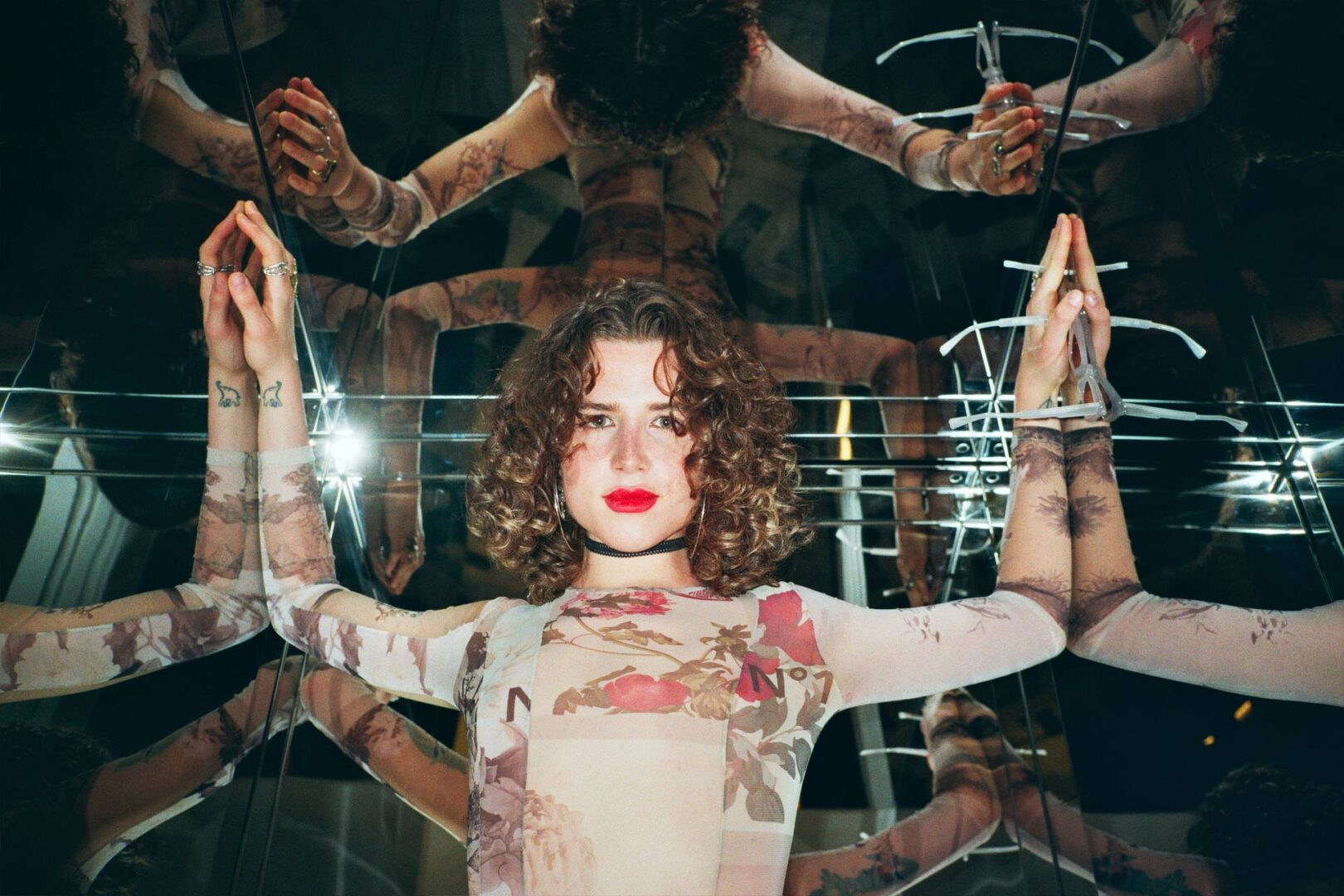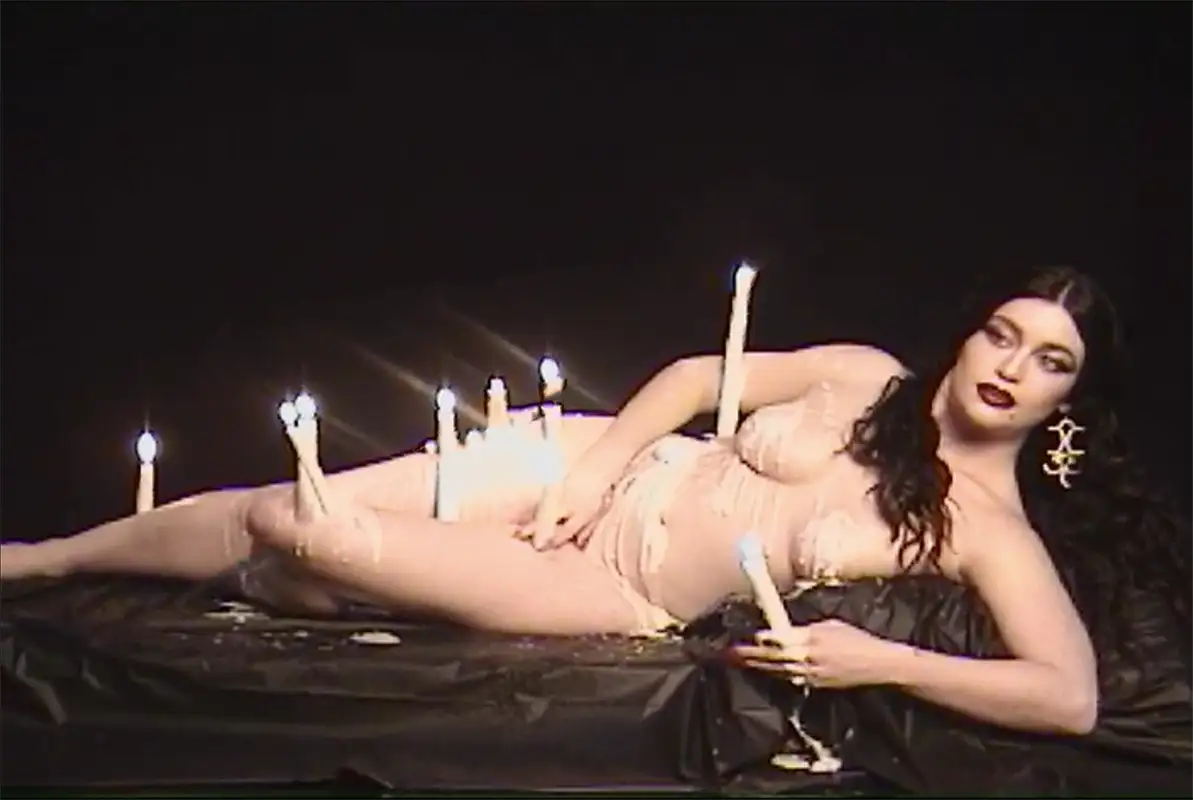New York, New York, the city, the people. Marie Tomanova introduces her work at W hotel in Rome. «It’s about the connection with the person you’re looking at»
The launch of Marie Tomonova’s new book in Rome
Pressed pages and the scent of a new book, carefully sliding through the images to avoid the paper cut, while holding Marie Tomanova’s latest volume, New York, New York. The portrayal of an unashamedly honest universe gathers the faces of the big city, glance after glance, holding to the piercing confidence of youth.
Hosted by the W hotel in Rome, the book launch continues the conversation between the hotel and the LGBTQ+ community in its quest to nurture equality and liberty forever. Marie’s work voices the same values and hunts for expression, sliding into the Italian atmosphere with a commissioned photography reportage – in collaboration with Lampoon – involving the other forms of talents linked to the art world and the Roman LGBTQ+ scene. Visible imprints of her beliefs, her art becomes «a geography of human belonging» where the emotional tissue of the city intertwines with that of the people, of their being and becoming in New York. Marie introduces the volume by focusing on this subjective intersection, quoting Yi-Fu Tuan (At Home in the World, 1995) «Place is security, space is freedom: we are attached to the one and long for the other is no place like home». The concept of a home lies in between; her experience – a narration of it.

Born in the South Moravian border town, Mikulova, Marie Tomanova immigrated from the Czech Republic after finishing her Fine Arts Master in painting. However, her potential was never fully recognized. She felt the vision borders of a context where to be a woman remained a limitation. «I was very discouraged in the school system and never really felt supported as a female artist. I never felt like there were opportunities for me», Marie confesses. At first, she didn’t fall in love with photography, but with photography. Seeing Ryan Mcginley’s picture of a nude girl holding a wolf, Marie felt inspired by what it manifested, the kind of spirit it depicted, therefore deciding to move to New York where she could meet her idol. «For me, the American dream is about overcoming my dreams. I was able to dream for myself, breaking that ceiling of my expectations and getting beyond. I wasn’t just another muse for Ryan, but we were both professional photographers talking to each other».
After she arrived in the States, Marie met Thomas Bechdel during the repeated visits to the Metropolitan Museum. He helped her regain her thirst for art and took her to the Guggenheim Museum. It represents the focal point in her career «because of Francesca Withman’s show on view. They were showing her photographs and journals. It’s fascinating to get a view into artists’ minds through that, so I related to her journals, and it made me think about why have I never tried photography?»
New York, New York. Fostering a coming of age imaginary
A photo of Jesse Rutherford and Devon Carlson, their mouths dipped in scattered red lipstick, Kate naked in a bathtub, Dev and Alessandro Michele at a party, Gracie led back in a red costume. Each picture mimics the spirit of the book, romantic and reckless.
«Marie shows us the landscape of youth in New York City» while crafting the image of immigration and integration. New York New York is one of her most significant projects after Young American and It Was Once My Universe. She worked on the pictures once she returned to the big city from her hometown visit. As a result, there’s a greater extent of familiarity and closeness to the portraits, one that only a true New Yorker can achieve. It represents Marie’s coming of age moment, her maturation as an artist and person finding a belonging shell.
«For Tomanova, New York City is more than just ceaseless activity, consumerism, concrete, and glass; it is a connection to her sense of place, her sense of home, her past». She emphasizes an unexpected nature hidden from visitors, known only to inhabitants. From Tompkins Square Park to the East River Park, Marie Tomanova «sought out nature at first, as it provided a familiar link to her past on a farm, that relationship between body and some primordial space».
Marie shots all of her photographs on film instead of digital, the contact with matter and tangibility being something she got stuck with from her painting background. Raw and sincere, each portrait stays true to reality since Marie doesn’t like alternating the fact regarding postproduction. Naked bodies, subversion, fixating gazes, «most of the portraits are looking at you, so it’s about the connection with the person you’re looking at. It’s about my connection with them when we take a photograph».
Determined by a forbidden return to her Home, the eight years Marie spent in the States are about building a relationship with one’s self and others, far from political oppressions. Her work mirrors this sensation of intimacy, detaching from the studio or street photography canons.
It Was Once My Universe is the project that best reflects Tomanova’s return to her family home for the first time after eight years of exile in the United States. In contrast, New York blurs the lines of placement «either photograph could be in either location, Mikulov or New York City. The only thing that would give this away might be a detail or two, such as the flyer for the Tata Bojs band in Tomanova’s room or the label on a bottle in Michelle’s, subtle indicators or glyphs of a particular cultural and geographical matrix, things that, upon close inspection, tie an image to place».
Clothing, styling, subcultures. On the fabric of youth
Gracie wears unapologetic red lingerie with a faux fur coat, Milk has a matched top and hat in a punk tweed print, while Collen reinvents the grandma chic with his black lace dress and a romantic bandana. Piercings, tattoos, and boyfriend hoodies. The landscape Marie captures in her book is about the dress code of a new generation matching the urban scenery of New York.
«For me, it’s a lot about finding a connection and talking and knowing each other a little bit. I like to share stories and life ideas of what people went through», testifies Marie, who wouldn’t photograph anyone before knowing their names. Her work becomes personal through an identification and acknowledgment process, clothing remaining the visual imprint of each one’s identity. In New York, New York, a new layer of youth becomes more visible, more tangible. Addressing the rise of an American subculture, the book makes room for people wanting to express themselves as they are, with no judgemental thoughts allowed.
In her observations, Marie Tomanova notices how «this young generation is free because going to NY for a semester is not a big deal. In 2011 leaving for the US was like going to the other side of the World. They are more connected because they see everything through social media and feel things closer». This generation is negating label logos or glamorous makeups, the one discarding gender norms in the language of clothing, the one ‘breaking the rules. Thomas Bechdel points out how powerful is Marie’s work when seen in an exhibition where «these kids saw themselves just how they were, and what it said was ‘You are ok who you are, you don’t have to be something else’. Most of these kids are… kids. And they matter just as much as everyone else».

Artistic expression and the aesthetic of globalization. Between alienation and emancipation
Substantially, Marie’s story is that of the World we live in now. Immigration became a strong foundation of economic, social, and cultural development, where the freedom to leave encounters the need to stay.
«I always had a stash of money in my socks if things were bad, so I had the money for a plane ticket to get home», says Tomonova, remembering the light-years away from Home.Belonging to the inception of an era free of Communism and restricted borders, Marie’s generation is the first to have been able to leave the former Eastern Bloc after the fall of the Berlin Wall. Through the shadow of these memories and the contrast between two opposite cultures, Tomanova depicts how the relationships between oneself and others look without political oppression. She captures the «inside look, a New York kind of democracy».
New York, New York is a book about foster families far away from Home. It is not a collection of portrayals but of feeling safe while intrigued by the newness encountered by different people. Marie returned to the big city in the same period Trump was shutting down the border and arresting people, her work a testify of belonging.
Arriving from a farm in one of the globalization hubs of the World, the young artist went through a cultural shock, sustained by the lack of internet and social media access from that period. «For her, it hurt to be away. During her time in the United States, she relieved and idealized Home in her mind whenever things were difficult, so when she returned home in the winter of 2018, she was unprepared for the deep confusion and conflict she found within herself. She felt alien, yet she still belonged», explains Thomas Bechdel.
Photography was always present in Marie’s life, even before studying art. However, she sees the difference between the intention and the digital medium. Before the Instagram and Facebook pages, there was another approach to photography, «it was about just capturing a raw moment, almost as a visual journal of your life, in terms of being able to remember the moments living longer in a kind of archive». Our era brought a new aesthetic represented by the people and their intertwined cultural backgrounds. What’s visible is the seeking for freedom and an authentic community.
Marie Tomanova can be an ambassador of the American dream, where everybody finds a place and succeeds in their ambitions. But, now that political changes have become more radical, there’s more fragility to this conviction. In New York, New York, «the façade of ‘land of opportunity’ and ‘freedom for all’ begins to crack. Tomanova’s response is to photograph what her America looks like».
Marie Tomanova
New York-based photographer whose work tackles displacement, identity, gender, and memory. Growing up in a South Moravian border town, Mikulov, in the Czech Republic, and moving to the United States, her photography has focused on portraits of the people she met on the street. For Lampoon Magazine, she photographed Kate and Odie for issue no. 23.
Credits:
Photography: Marie Tomanova
Styling: Giorgia Fuzio
Grooming: Maria Grazia Carbone
Talents: Agnes Question Mark, Kateryna, Aurora, Carlo, Andrea, Donato



















